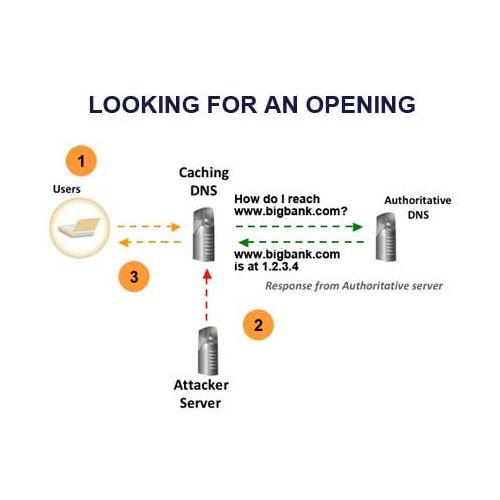-
Expiration of domain entry opens door: With cache poisoning an attacker tries to insert a fake address entry into a DNS server. In the past an attacker could only attack a DNS server when it was refreshing a cache entry. 1. Attacker figures out when a domain entry will expire on a caching server using readily available tools. 2. Attacker "races" the legitimate DNS server, trying to get the caching server to accept a fake response. 3. In order to be accepted the fake response must match query parameters of the actual response.
-
Surfers never see the diversion: Subsequent traffic intended for a legitimate domain is redirected to the server controlled by the attacker. This happens without the subscriber knowing, which is why this attack is so dangerous.
-
Are these tips and insights helpful? Have best practices of your own to share?
-
Caching server critical: The primary function of DNS is to return an IP address for a given domain name. Virtually every contemporary Internet application depends on DNS -– browsing, email, SIP etc. 1. User inputs www.bigbank.com 2. If the domain isn’t cached, the server consults with an Authoritative DNS server. 3. The address is cached and forwarded to the end user, who is then connected.
-
There has been a long history of attackson the DNS ranging from brute-force denial-of-service attacks to targeted attacks requiring specialized software. In July 2008 a new DNS cache-poisoning attack was unveiled that is considered especially dangerous because it does not require substantial bandwidth or processor resources nor does it require sophisticated techniques. Let's take a look at how DNS cache poisoning works and what can be done to prevent it.
-
Attacker tries to beat authoritative DNS: If the attacker's fake answer arrives before the "real" Authoritative server's answer, and the attacker has guessed the query parameters correctly, most caching servers will accept the response and then use the address provided by the attacker to respond to queries for the domain being attacked. 1. Attacker gets DNS to accept fake response (matches query parameters): www.bigbank.com Is at 6.7.8.9 (an address controlled by the attacker). 2. DNS Server responds to user queries with fake address.
-
Flooding the cache server makes it vulnerable: Until recently, an attacker could only poison a caching server entry when the Time to Live (TTL) of the entry expired. Now the door has been thrown wide open. 1. Attacker sends numerous fake questions to the caching DNS server, knowing the server can not answer: Q) Where is 123xyz.bigbank.com? This forces the caching server to keep making requests of the Authoritative DNS server, greatly increasing the chances for the attacker to slip in fake answers. 2. The fake answers the attacker feeds to the caching DNS can also further comprise the server by pointing to other fake resources like name servers: A) I don't know where 123xyz.bigbank.com is. But FAKEnameserver.bigbank.com knows, and they can be reached at 6.7.8.9.
-
Attacks come from multiple points
Slideshow: How DNS cache poisoning works
8 Photos
Tips to thwart DNS cache-poisoning attacks







